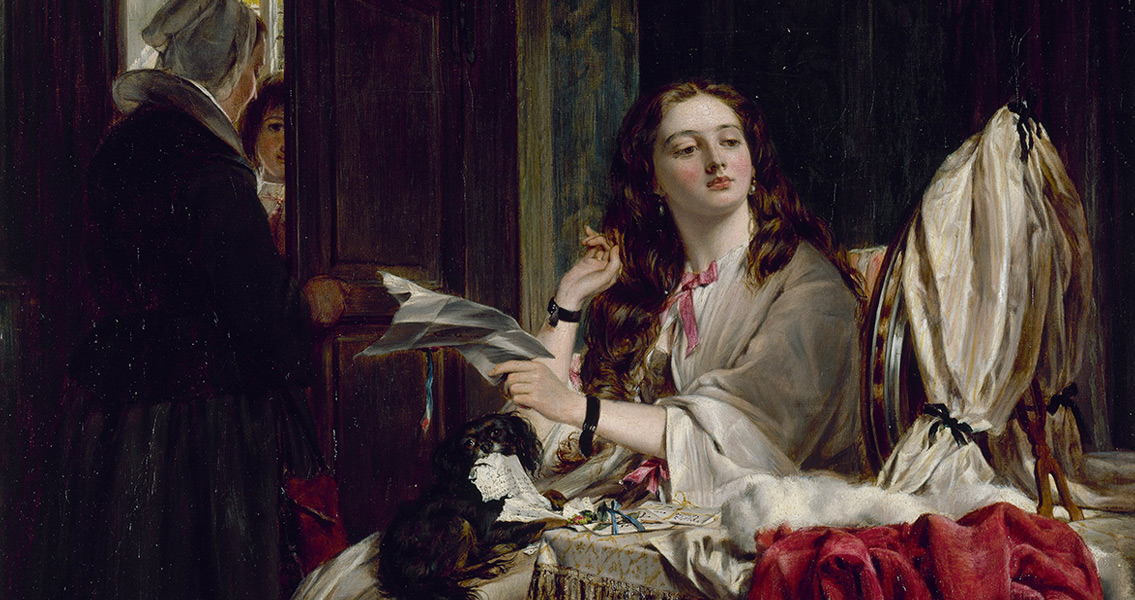<![CDATA[This Saturday marks St. Valentine's Day, a well established tradition associated with romance and love. The occasion is marked with a variety of idiosyncratic customs - anonymous messages and flowers - that although synonymous with the day, have origins that are hard to trace. February 14th is usually considered to have been the day that St. Valentine was executed in 270 CE. During the late third century, the Roman Emperor Claudius had seen the empire involved in a series of costly and unpopular military campaigns. Reflecting the paranoia and superstition common throughout Roman society during the period of its decline, Claudius searched for a simple explanation for the Empire's fall from seeming infallibility. Claudius concluded that the Roman military was becoming soft, a fact which seemed to be supported by the increasing difficulty in recruiting soldiers. Claudius believed it was the Roman soldiers' attachment to their wives and families which was causing the problems with the military. As men developed relationships and a sense of responsibility for their dependents, they started to worry about the consequences of their death. Essentially, Claudius calculated that once men became concerned with the lives of those who depended on them, and not just their own, they were less willing to fight and risk themselves. His solution was to ban all marriages and engagements in Rome, in an attempt to encourage more Romans to join the army. Claudius' ban occurred at a time when Christianity was slowly expanding its influence within Roman society. Although Roman culture was much more accepting of polygamy than modern Western society, Claudius ban caused a great deal of problems for Christians and their belief in monogamy. Valentine was supposedly executed for breaking this law and secretly carrying out Christian wedding ceremonies for young couples. When his crime was discovered he was bought before the Prefect of Rome, who condemned Valentine to the brutal fate of being beaten to death, before having his head cut off. Valentine befriended the daughter of his jailer, and his last action was to supposedly leave her a note signed "from your Valentine". Valentine was named a Saint after his death, but the details of his story are vague at best. The Catholic Encyclopedia points out that there were at least three martyrs named St. Valentine from this period, so it is far from clear which one is associated with the legend. The traditions we follow now could come from the pagan festival of the Feast of Lupercalia, which was celebrated around February. This festival of love was banned by Pope Gelasius in 496 CE, and replaced with St. Valentine's day. It is possible that some traditions from this pagan festival carried over into the later Christian celebration. Another explanation for the origin of Valentine's Day's romantic associations is that they were invented by Geoffrey Chaucer. The medieval poet played a defining role in the development of English Language and Literature, and it is possible that the romanticism of Valentine's Day was nothing more than a construction for one of his poems. Prior to Chaucer's fourteenth century poem "Parliament of Foules", there are no known recorded references of St Valentine's Day being linked with courtly love and romance. One thing that is for sure is that many of the current features of Valentine's Day - boxes of chocolate, greetings cards and flowers - are comparatively modern conventions. Valentine's Day as we celebrate it today is far removed from the legend of St. Valentine, and even unrecognisable with the description found in Parliament of Foules. As with many celebrations, it is defined more by the context in which it is being celebrated than the time in which it originated. ]]>
St. Valentine
